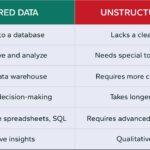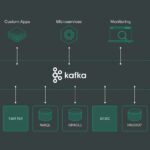Optimizing data indexing is crucial for efficient data retrieval and faster analytics in the realm of Big Data. Auto-tuning data indexing offers a dynamic approach to configuring and optimizing indexes automatically based on the workload and data patterns. By leveraging advanced algorithms and machine learning techniques, organizations can achieve better performance and scalability while reducing manual intervention. In this article, we will explore how to implement auto-tuning data indexing strategies to enhance the speed and agility of analytics processes within Big Data environments.
In the world of Big Data, efficient data indexing is crucial for extracting insights quickly and accurately. One advanced technique that organizations can leverage is auto-tuning data indexing. This process involves the automatic adjustment of indexing parameters to optimize query performance and reduce latency. This article provides a comprehensive guide on how to implement auto-tuning data indexing to enhance your analytics capabilities.
Understanding Data Indexing
Data indexing refers to the method of organizing data in a database to facilitate quick retrieval. When dealing with large datasets, the speed of data access can significantly impact the overall performance of business intelligence and analytical processes. By creating indexes, you can reduce the amount of data the system has to scan when executing queries, thereby improving response times.
The Importance of Auto-Tuning
Auto-tuning adds an additional layer of efficiency by dynamically optimizing indexing based on real-time data access patterns. Instead of relying on static indexing strategies, auto-tuning uses algorithms and machine learning to adjust indexing parameters to suit changing data types, volumes, and access patterns.
Key Benefits of Auto-Tuning Data Indexing
- Improved Performance: Automatically optimized indexing reduces the time taken for query execution.
- Cost Efficiency: Minimizing resource utilization leads to lower operational costs.
- Scalability: As data grows, auto-tuning adjusts, ensuring sustained performance without manual intervention.
- Enhanced User Experience: Faster analytics results lead to better decision-making.
Steps to Implement Auto-Tuning Data Indexing
Step 1: Analyze Current Data Access Patterns
The first step in implementing auto-tuning data indexing is to conduct a thorough analysis of your current data access patterns. This includes understanding which queries are executed most frequently and the types of data being queried. Use logging mechanisms or monitoring tools to gather this information over a period of time.
Step 2: Choose the Right Auto-Tuning Tools
Various tools and frameworks are available for auto-tuning indexing. When selecting a tool, consider factors such as scalability, compatibility with your existing infrastructure, and community support. Some popular options include:
- Elasticsearch: Offers an automatic indexing feature that adjusts based on usage.
- Apache Cassandra: Supports tunable consistency levels for indexes.
- Amazon Redshift: Automatically analyzes data and suggests optimal indexes.
Step 3: Configure Initial Index Settings
Once you choose the right tool, the next step is to configure the initial index settings. While auto-tuning will adjust these parameters over time, providing a strong starting point is essential. Key settings to consider include:
- Index Type: Choose between primary, secondary, or full-text indexes based on your use case.
- Index Granularity: Determine the level of detail necessary—such as row-level or column-level indexing.
- Storage Settings: Decide on storage engines that meet your performance requirements (e.g., InnoDB, MyISAM).
Step 4: Implement Machine Learning Algorithms
Integrate machine learning algorithms to facilitate the adaptive nature of auto-tuning. Some common approaches include:
- Reinforcement Learning: Use reinforcement models that learn from query performance to adjust indexing.
- Clustering Algorithms: Group similar queries to optimize indexing strategies.
Step 5: Monitor Performance and Adjust
After the initial setup, continuous monitoring of performance metrics is vital. Consider utilizing dashboards that display index usage statistics, query execution times, and resource utilization.
Key performance indicators (KPIs) to observe include:
- Query Execution Time: Measure the time taken for queries before and after implementing auto-tuning.
- CPU and Memory Usage: Analyze how much resource your databases consume.
- Index Hit Rate: Determine how often the index is being used compared to the frequency of table scans.
Step 6: Iterative Improvement
Auto-tuning should not be a one-time process. The indexing strategy should evolve based on new data types, access patterns, and query complexity. Conduct regular audits to validate and refine the performance of your auto-tuning setup.
Best Practices for Auto-Tuning Data Indexing
1. Set Threshold for Auto-Tuning
Define clear thresholds that trigger the auto-tuning process. For instance, you may consider thresholds related to query latency, resource consumption, or other performance metrics.
2. Regular Data Cleansing
Ensure that outdated or irrelevant data does not bloat your indexes. Data cleansing ensures that indexing remains efficient and relevant. Schedule regular reviews of your dataset to prune unnecessary data.
3. Documentation and Training
Document the tuning process and provide training for team members who manage the system. Understanding the implications of index tuning can equip the team to troubleshoot issues that may arise during implementation.
4. Incorporate Feedback Loops
Create feedback mechanisms that leverage user input. For example, if certain queries take longer to return results, use this information to adjust your auto-tuning parameters accordingly.
Challenges in Implementing Auto-Tuning Data Indexing
Despite its benefits, implementing auto-tuning data indexing can present certain challenges:
- Complexity of Algorithms: The algorithms used for tuning can be complex and may require accurate calibration.
- Initial Setup Time: Gaining the necessary insights for effective tuning may require a significant amount of time and data analysis initially.
- System Compatibility: Not all systems support advanced auto-tuning features, making tool selection critical.
Future Trends in Data Indexing
As technology continues to advance, the future of data indexing is likely to feature the following trends:
- AI-Driven Indexing: Increased reliance on artificial intelligence to predict optimal indexing strategies based on historical data.
- Real-Time Index Adjustment: Techniques that will allow for near-instantaneous adjustments to indexes based on incoming query patterns.
- Cross-Platform Indexing Solutions: Solutions that integrate with various database systems to provide a unified approach to indexing.
By adopting auto-tuning data indexing, organizations can maximize the productivity of their analytics teams and ensure faster decision-making processes. With the continual evolution of data technologies, staying ahead involves a commitment to optimizing indexing for both existing and future needs.
Implementing auto-tuning data indexing can significantly enhance the speed and efficiency of analytics in Big Data systems. By automatically optimizing index structures based on workload patterns, organizations can achieve faster query processing and improved overall performance. This approach not only reduces manual tuning efforts but also enhances the scalability and flexibility of data indexing in dynamic Big Data environments, ultimately leading to more accurate and timely insights.














